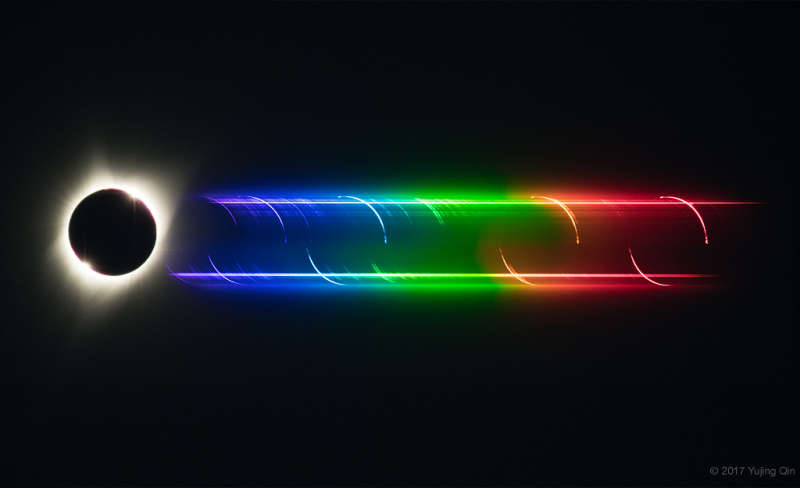
|
Credit & Copyright: Yujing Qin
(University of Arizona)
Explanation:
In clear Madras, Oregon skies, this colorful eclipse
composite captured the
elusive
chromospheric or flash spectrum of the Sun.
Only three exposures, made on August 21 with telephoto lens and
diffraction grating, are aligned in the frame.
Directly imaged at the far left, the Sun's
diamond ring-like appearance
at the beginning and end of totality brackets a
silhouette of the lunar disk at maximum eclipse.
Spread by the
diffraction grating into
the spectrum of colors toward the right, the Sun's
photospheric spectrum
traces the two continuous streaks.
They correspond to the diamond ring glimpses of the
Sun's normally overwhelming disk.
But individual eclipse images also appear at each wavelength of light
emitted by atoms along the thin, fleeting arcs of
the solar chromosphere.
The brightest images, or strongest
chromospheric emission,
are due to Hydrogen atoms.
Red hydrogen alpha emission is at the far right with blue
and purple hydrogen series emission to the left.
In between, the brightest yellow emission is caused by atoms of
Helium,
an element only first discovered in the
flash spectrum of the Sun.
|
January February March April May June July August September October November December |
| ||||||||||||||||||||||||||||||||||||||||||||||||
NASA Web Site Statements, Warnings, and Disclaimers
NASA Official: Jay Norris. Specific rights apply.
A service of: LHEA at NASA / GSFC
& Michigan Tech. U.
Based on Astronomy Picture
Of the Day
Publications with keywords: spectrum - solar eclipse
Publications with words: spectrum - solar eclipse
See also:
